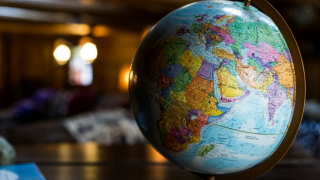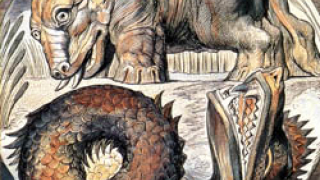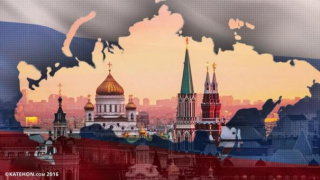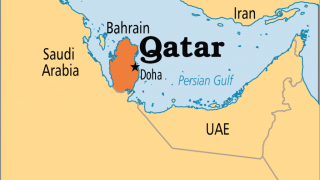2017 Forecast: Africa
Summary
The Democratic Republic of the Congo (DRC, hereafter also referred to simply as the Congo) could once again serve as a catalyst for a wider regional conflict and another “African World War”, while the Arab states of North Africa have a chance to move closer to the emerging Multipolar World Order in Afro-Eurasia.
Congo’s Collapse
The DRC is on the verge of yet another period of civil war, this time brought about by President Kabila’s postponement of national elections and refusal to step down during the interim. The author forecast this exact scenario over half a year ago for The Duran in an article titled “China vs. the US: The Struggle for Central Africa and the Congo”, in which the real reason behind the turmoil poised to take over one of Africa’s largest countries was revealed. Rather than being what the Mainstream Media is trying to project as yet another stereotypical African crisis of a “dictator refusing to give up power”, the truth is that the emerging conflict is actually about a larger proxy struggle between the US and China for control of the world’s largest coltan and cobalt deposits – minerals which are an irreplaceable part of modern electronics and communication devices. As the aforementioned article proves, the country with the greatest degree of access to these reserves will acquire a strategic advantage in the future world economy, which is why the US is contemplating the use of Hybrid War to destructively dislodge China and its affiliated companies from this industry so that they can be later replaced by Western firms.
The Chaos Belt
Should an incipient Hybrid War be unleashed in the Congo, it’ll affect much more than just that country’s inhabitants. The DRC is crucially located in the heartland of the African continent, and has already twice in the past served as the trigger for sparking larger regional crises. The First and Second Congo Wars grew to involve a multitude of African states, with the latter one even earning the moniker of “Africa’s World War” because of the broad geographic scope of its participants. Ignominiously, it also boasts the title of being the bloodiest war since World War II, and an estimated five million people died from its direct or indirect results since it first broke out in the late-1990s. Considering how there’s already an obviously documented track record of the Congo turning into a deadly black hole of regional and continental chaos, there’s a disturbing chance that it could once more function in this frightful role if it’s again thrown into turmoil per the abovementioned forecast.
Speaking of which, the author’s Duran article also spells out the most likely scenario forecasts for what can predictably happen in the event that the Congo slips back into chaos. All predictions in one way or another return to the common denominator of regional conflict, seeing as how the country’s borders are already extraordinarily porous and a myriad of armed groups traverse its northeastern peripheral territory. As is explained and cited in the article, South Sudanese, Ugandan, and Rwandan “rebel” groups (referred as terrorists by some actors) run wild in this loosely governed corner of the country, and there’s nothing preventing militias from the failed state of the Central African Republic from crossing over the Congo’s northern frontier either. The author paid more attention to these scenarios in a text submitted to a conference about “The Threats Of Terrorism In Africa: Internal And External Aspects”, which was hosted by the Institute of African Studies at the Russian Academy of Sciences in November 2016. The English translation should be published at Katehon sometime early next year, but the Russian version is accessible at this link.
The analysis lays out the ease at which a Color Revolution crisis in the Congo could trigger a wider regional war, focusing on how the non-state actors in the northeastern DRC have a history of exploiting Kinshasa’s weaknesses and launching cross-border attacks against its neighbors, which consequently invites reciprocal measures from the victimized governments and fuels the rapidly accelerating conflict cycle. If just one of the three bordering states in this region – South Sudan, Uganda, and/or Rwanda – intervenes in the Congo during these tumultuous times, then it could encourage the others to do so as well in decisively finishing off their non-state foes and preemptively safeguarding their own sovereignty. What’s most dangerous about this possibility is that, as history shows, the intervening countries in the Congo don’t stop once their immediate and publicly presented objectives have been completed and instead transform their unilateral mandate into one of regime change.
South Sudan and the Central African Republic are much too weak to do this, but Uganda and Rwanda are a whole different set of countries entirely which have already done this on one occasion. Should the Congo erupt in violence and trigger a larger regional war, it’s very likely then that the transoceanic stretch of African states stretching from the Atlantic to the Indian Ocean could get involved to varying extents and thus transform the bicoastal region into a chaotic belt of conflict. Each of the DRC’s neighbors have their own destabilization vulnerabilities, and in the case of the Republic of the Congo and Angola, both have experienced sporadic Color Revolution strife which could be emboldened by a host of new situational factors (refugees, cross-border fighters, etc.) emanating from a collapsing Congo. Zambia and Tanzania, typically much more stable than the rest of the DRC’s neighbors, could also be sucked into the vortex of violence too.
The author explored the specifics of each and every one of these possibilities in his Oriental Review series about Africa’s Hybrid War risks, and while the progressively published series has yet to be released in its full entirety, the reader should certainly reference it going forward if they’re interested in more details about the interconnected conflict potential in the continent.
North Africa: European Threat Or Eurasian Opportunity?
The last main trend to explore in Africa is the uncertain geopolitical future of its northern Arab shoreline. This part of the continent is historically and demographically distinct from rest of its sub-Saharan parts, and is geographically endowed with a greater potential for interacting with Eurasia. As was explained in the first section about the EU, there’s reason to believe that the situation in this part of Africa might deteriorate in the future and thus create countless challenges for Europe. On the other hand, however, the reverse might actually happen, and Algeria for example might undergo a smooth leadership transition just like Uzbekistan did while Daesh in Libya might finally be defeated. Furthermore, Egypt could continue along the trajectory of its present pro-Russian tilt and thus draw more of the region into the Eurasian multipolar orbit.
Should that happen, then Egypt could interestingly complement its Horn of Africa Ethiopian rival by being a Russian-friendly multipolar counterpart to the Chinese-friendly ancient civilization to its south. Egypt and Ethiopia aren’t expected to smooth over their differences over the Grand Ethiopian Renaissance Dam anytime soon (no matter what public statements might be issued to the contrary from time to time for convenient diplomatic purposes), but their competition with one another over water rights and broader leadership issues could be stabilized through the discrete involvement of Russia and China’s mediating influence over their main respective African partners. If Moscow and Beijing can help keep the peace between these two multipolar states and neither of them capitulates to the US’ Hybrid Wars against them, then the “Afro-Eurasian Blueprint From A Multipolar World Order” can be significantly strengthened and expanded through the incorporation of North and East Africa’s largest, most powerful, and geographically convenient states.
Of course, this optimistic scenario largely hinges on the situation in each anchor state’s regional neighborhood, as the continuance of civil war in Libya and the spread of Daesh could augur quite negatively for Egypt’s future prospects, as could an intensification of the Qatari-backed Muslim Brotherhood terrorist insurgency against Cairo. Likewise, the unrest in Ethiopia among the Oromo and Amhara communities against the central government could return to being a major force for destabilization after the six-month state of emergency ends, and there’s no doubt that the US will continue to work with the hyper-nationalist diaspora to stoke a conflict aimed at collaterally damaging China’s ultra-crucial New Silk Road through the country. Further afield, there’s of course the uncertainty posed by the looming departure of Algerian President Bouteflika from the political scene in North Africa, just as there’s the very real risk of a second round of civil war breaking out in South Sudan and spilling over the border to encourage a similar process in Ethiopia.
That being said, if Russia and China can manage to transform Egypt and Ethiopia into their respective continental anchors, maintain the cold peace between both rivals, and assist their partners in counteracting the regional Hybrid War threats against them, then there’s a strong likelihood that these two states could become the lynchpins of multipolarity in Africa and thus complement the emerging world order that Moscow and Beijing are jointly constructing all across the Eastern Hemisphere.
Source: Katehon.com














